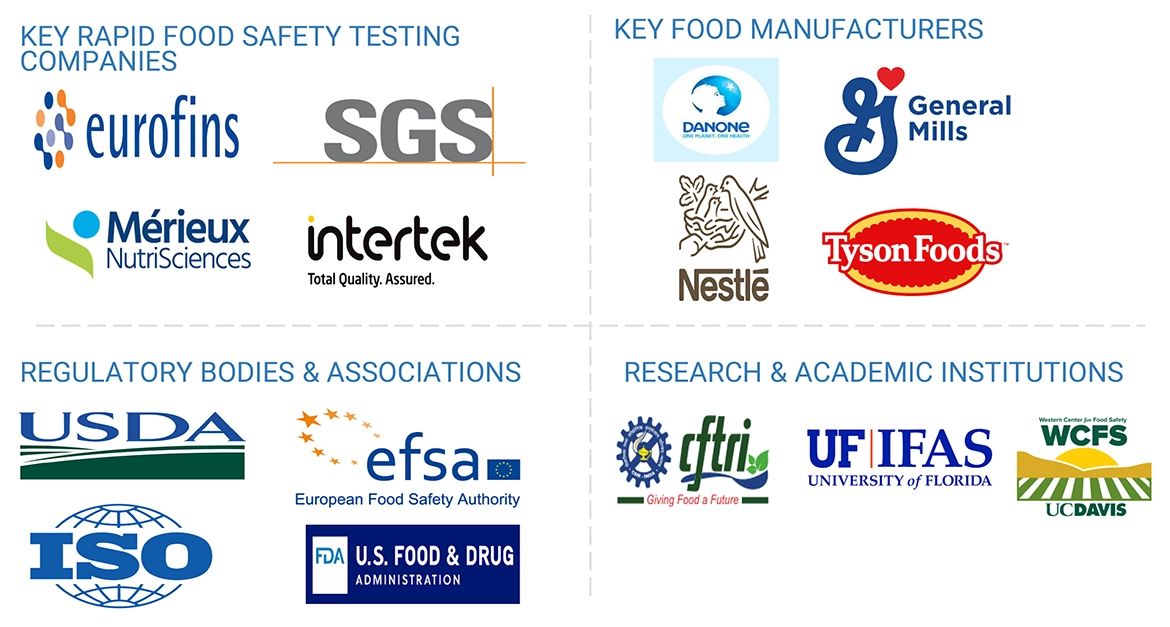The global food industry is under increasing pressure to ensure safety, transparency, and compliance. According to a recent research report, the rapid food safety testing market is valued at USD 19.66 billion in 2025 and is projected to reach USD 31.22 billion by 2030, growing at a CAGR of 9.7%. This strong momentum reflects heightened consumer awareness, stricter regulations, and technological innovations reshaping the future of food testing.
Why the Market is Growing
Foodborne illnesses, recurring outbreaks, and globalized supply chains have accelerated the need for more reliable and faster testing methods. Stricter oversight from regulatory authorities and rising demand for clean-label, allergen-free, and traceable products are also fueling adoption. Beyond compliance, food manufacturers and retailers are increasingly investing in solutions as the rapid food safety testing market size continues to expand globally.
Discover more—download your PDF copy now
Key Market Insights
GMOs: The Fastest-Growing Segment
Genetically Modified Organisms (GMOs) are a major focus area within food safety testing. Advanced molecular tools like PCR and qPCR are being used to detect unauthorized or unlabeled GMOs with high precision. Techniques such as ELISA and next-generation sequencing (NGS) further enhance accuracy, ensuring compliance with labeling standards while supporting growth in the rapid food safety testing market share.
Chromatography & Spectrometry: Lab-Based Gold Standard
While convenience-based and PCR-based tests dominate rapid detection, chromatography and spectrometry hold a significant share as confirmatory methods. Techniques such as HPLC, GC-MS, and LC-MS are widely used to detect pesticides, mycotoxins, heavy metals, and chemical residues. These remain crucial for regulators, food manufacturers, and leading rapid food safety testing companies that rely on accurate and trusted methods.
Regional Spotlight: North America’s Strong Position
North America accounts for the second-largest share of the global market. The US and Canada lead with advanced infrastructure, strong regulatory frameworks, and high adoption of cutting-edge technologies. Supported by agencies like the FDA, USDA, and Health Canada, this region remains a focus of rapid food safety testing market research and innovation.
Leading Players Driving Innovation
The competitive landscape includes global leaders such as Eurofins Scientific, SGS, ALS, Intertek, Mérieux NutriSciences, TÜV SÜD, AsureQuality, Neogen Corporation, QIAGEN, and Promega Corporation. These innovators are shaping the rapid food safety testing industry by investing in molecular diagnostics, biosensors, and AI-driven platforms to make testing faster, more accurate, and more accessible.
As the global food system becomes more complex, the rapid food safety testing sector will remain essential for safeguarding public health and strengthening consumer confidence. Emerging technologies are set to redefine testing standards, making food safer, smarter, and more traceable.
Frequently Asked Questions
Q1. What is the rapid food safety testing market?
The rapid food safety testing market refers to technologies and solutions that enable quick, reliable detection of pathogens, allergens, GMOs, pesticides, heavy metals, and other contaminants in food products to ensure safety and compliance.
Q2. What is driving growth in the rapid food safety testing market?
Key drivers include rising foodborne illnesses, stricter global regulations, increasing demand for clean-label and traceable foods, and growing international food trade.
Q3. What is the projected market size by 2030?
The market is expected to grow from USD 19.66 billion in 2025 to USD 31.22 billion by 2030, at a CAGR of 9.7%.
Q4. Which testing targets are gaining the most traction?
Pathogens remain a dominant target, while GMOs are emerging as the fastest-growing segment due to global labeling requirements and consumer awareness.
Q5. Which technologies are most widely used?
PCR-based methods, immunoassays (ELISA), and convenience-based tests lead the market, while chromatography and spectrometry remain gold-standard confirmatory tools.
Q6. Which regions dominate the rapid food safety testing industry?
Europe leads due to strict food regulations, followed by North America with advanced infrastructure and regulatory support. Asia-Pacific is emerging rapidly due to expanding food trade and consumer demand.
Q7. Who are the key players in the rapid food safety testing market?
Leading companies include Eurofins Scientific, SGS, ALS, Intertek, Mérieux NutriSciences, TÜV SÜD, AsureQuality, Neogen Corporation, QIAGEN, and Promega Corporation.
Q8. What trends are shaping the future of this market?
Adoption of biosensors, AI-driven testing, automation, and next-generation sequencing are key trends making food testing faster, smarter, and more cost-effective.

